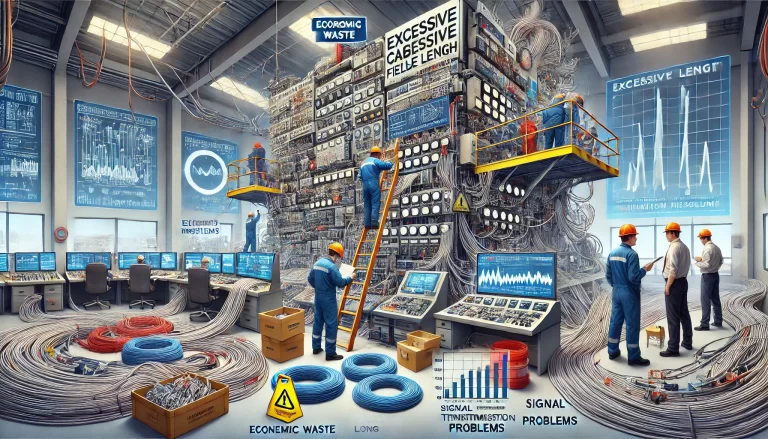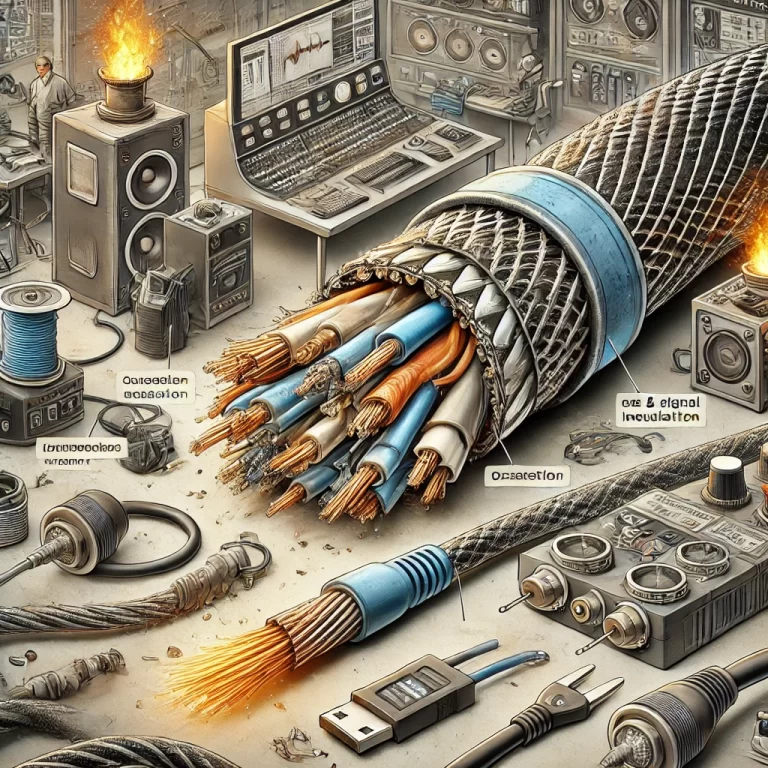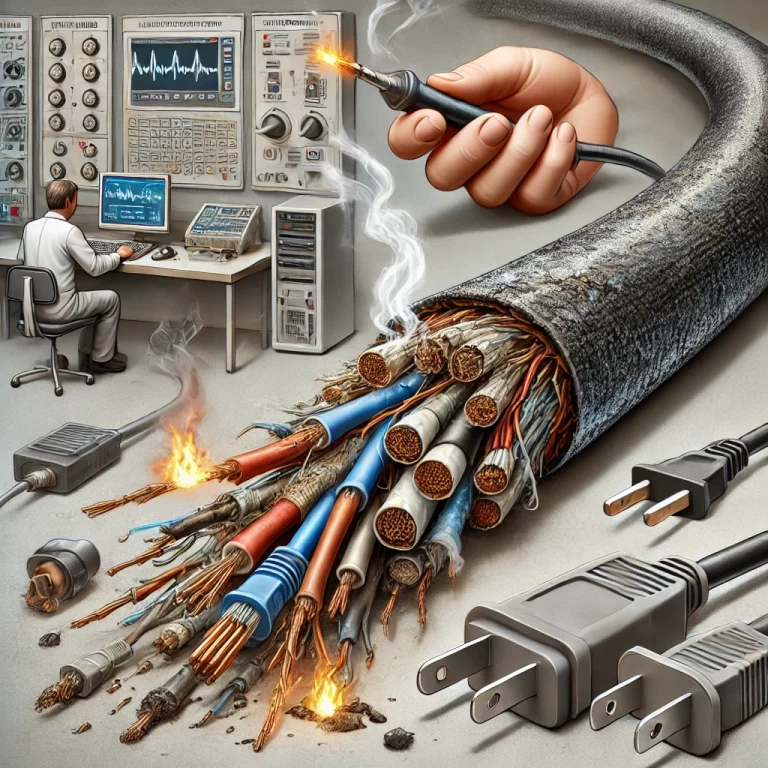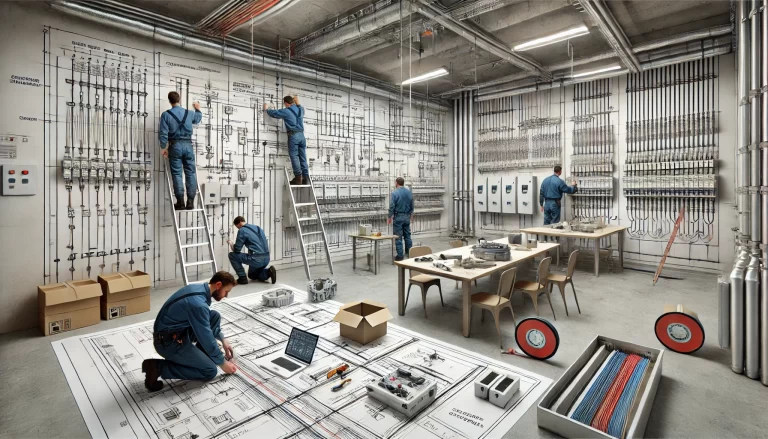Introduction
In everyday electrical and electronic devices, power and signal cables are essential components that ensure stable performance and reliable communication. However, over time, these cables are susceptible to oxidation due to environmental factors, frequent use, or natural wear and tear. Oxidation of these cables can lead to several severe consequences, such as increased electrical resistance, poor signal transmission, equipment malfunctions, and even safety hazards like electrical fires or electrocution. This article explores the impact of oxidation on power and signal cables, highlighting its effects on electrical performance, device operation, and safety, and suggests preventive measures to mitigate these risks.
1. Electrical Performance: Increased Resistance and Poor Conductivity
Increased Resistance
When power and signal cables undergo oxidation, a thin layer of oxide forms on the surface of the conductors, increasing their electrical resistance. For instance, if the terminals of power cables become oxidized, the resistance between the wire and the terminal can rise. This increased resistance results in higher energy loss as electrical current flows through the cable. The consequence is reduced power transmission efficiency and signal quality, as the cable no longer provides an optimal pathway for electrical current.
Poor Connection and Contact Issues
Oxidation also compromises the integrity of the connections between power cables and their terminals. The oxide layer reduces the stability of the connection, leading to a greater chance of poor contact or intermittent connectivity. For example, an oxidized power cable connector may cause unstable power delivery, resulting in frequent shutdowns of high-precision equipment like computers or medical devices. This issue can cause these devices to randomly power off or experience erratic behavior, significantly impacting their functionality and reliability.
Signal Transmission Degradation
For signal cables, oxidation’s impact on electrical resistance and connection quality is even more pronounced. Increased resistance and poor contact cause signal attenuation, which weakens the quality of data transmission. In the case of audio and video cables, this attenuation can cause signal distortion, noise interference, and a loss of data integrity. As a result, the device receiving the signal may experience distorted audio or video, or in the case of digital devices, errors in data processing or communication.

2. Impact on Device Operation: Instability and Shortened Lifespan
Unstable Device Performance
When oxidation disrupts the power supply or signal transmission to a device, the performance of that device becomes unstable. For example, audio equipment may intermittently produce static noise, or a computer might experience sudden slowdowns or erratic behavior. Devices relying on constant and stable electrical input will struggle to perform optimally when subjected to power disruptions caused by oxidized cables. This instability can lead to a frustrating user experience and can also affect the long-term performance of critical systems.
Accelerated Aging of Equipment
Oxidation-induced resistance causes localized heating in cables. As the resistance increases, the amount of heat generated also rises, which accelerates the aging process of the insulation around the cables. The insulation may become brittle, crack, or even peel off over time, exposing the underlying conductors. Once the insulation is damaged, the cable’s ability to prevent electrical shorts is compromised. This can lead to electrical faults within the device, potentially causing irreparable damage and significantly reducing the device’s lifespan.
Risk of Equipment Failure
In severe cases, the oxidation of power or signal cables can lead to a catastrophic failure of the device. As the contact resistance between the cable and the terminal increases, the amount of heat generated may cause the cable to overheat. Over time, this overheating can lead to short circuits between wires, triggering equipment malfunctions or even fires. In extreme cases, internal components like capacitors or circuit boards may burn out, rendering the device inoperable and requiring costly repairs or replacements.

3. Safety Hazards: Fire and Electric Shock Risks
Fire Hazards
One of the most severe risks associated with oxidized power and signal cables is the potential for fire. As oxidation increases the resistance in the cables, heat builds up at the contact points, and if this heat is not dissipated properly, it can ignite nearby combustible materials. This is particularly dangerous in environments where cables are surrounded by flammable substances. A fire caused by faulty wiring or oxidized cables could lead to property damage, injuries, or even fatalities.
Electric Shock Risk
Oxidation can also damage the insulating layer of the cable, especially in high-humidity or high-temperature environments. As the insulation deteriorates, it may crack or break, exposing the underlying conductive wires. This exposed wiring poses a serious risk of electric shock, particularly in settings where people may come into contact with the cables. Electrical shock accidents are especially dangerous for children or untrained individuals who may be unaware of the risks posed by damaged cables.

Conclusion
In summary, the oxidation of power and signal cables can cause a wide range of issues that affect both the performance of electrical devices and the safety of users. From increased electrical resistance and signal degradation to potential device failures and serious safety hazards like fires and electric shocks, the consequences of neglecting cable maintenance can be severe. Regularly inspecting and replacing oxidized cables, using high-quality materials, and ensuring proper insulation and connection methods can help mitigate these risks.
By taking proactive measures, we can prevent the costly and dangerous effects of cable oxidation, ensuring that our devices operate efficiently and safely for years to come.

Preventive Measures:
- Regular Inspections: Periodically check cables for signs of oxidation or wear and tear, especially in high-use or high-risk areas.
- Use of Protective Coatings: Apply anti-oxidation coatings or use cables designed to resist oxidation.
- Proper Storage and Handling: Avoid exposing cables to excessive humidity or high temperatures that can accelerate the oxidation process.
- Replacement of Damaged Cables: Replace cables with visible signs of oxidation, wear, or damage to maintain safe and efficient operation.
